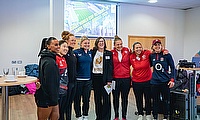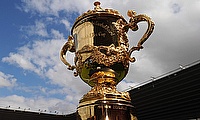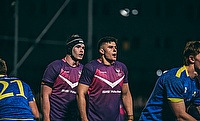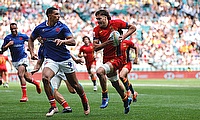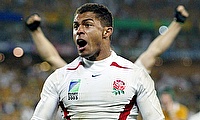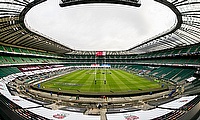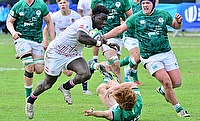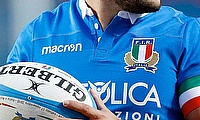Best units of the RWC
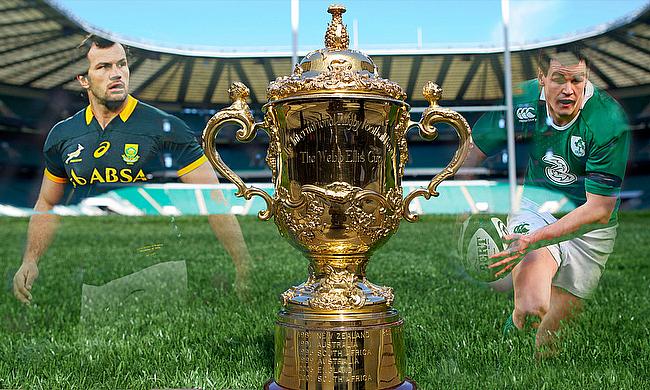
With RWC round the corner TRU looks at the best 'units' of the tournament
©TRU
The 2015 Rugby World Cup is now just days away and excitement levels are beginning to pique right across the globe.
There is little argument that New Zealand enter the tournament as red-hot favourites to defend their title, but how will they do when we break the teams down into their component parts and look at the best units in the international game? Take a look below and see.
Front Row – Tendai Mtawarira, Bismarck du Plessis and Jannie du Plessis, South Africa
Both the English and Argentine front rows looked like strong candidates for this position earlier in the year, but England’s lack of Dylan Hartley and Argentina’s injury crisis at tighthead has set both teams back significantly. The French trio of Eddy Ben Arous, Guilhem Guirado and Rabah Slimani deserves an honourable mention, as does Tier 2 nation Georgia, but it’s the Springboks who look in the best shape heading into the RWC.
Mtawarira is a powerful prop who can exert himself on the opposition both at the set piece and-in the loose, whilst J du Plessis put a disappointing past 18 months behind him during The Rugby Championship when the tighthead began to rediscover some of the form which made him such a feared prop for so long. The ace up South Africa’s sleeve comes in the form of Jannie’s younger brother, Bismarck. The younger du Plessis brings set-piece excellence, dynamism in the loose and a wealth of leadership to the heart of the Springbok front row.
Second Row – Brodie Retallick and Sam Whitelock, New Zealand
There is no shortage of quality engine rooms in world rugby right now and the South African, English, Irish and Scottish pairings all have valid claims for consideration. The physically-dominant Courtney Lawes and the guileful Geoff Parling of England perhaps come closest, but if Pieter-Steph du Toit can hit the ground running after his injury, he and Eben Etzebeth could give the All Blacks’ pairing a good run for their money.
As good as the other units may be, it’s impossible not to pick a reigning World Rugby Player of the Year and his second row partner who, just possibly, may be the better player of the two. Whitelock certainly lives in Retallick’s shadow when it comes to global appreciation, but the Crusader is the brain at the heart of a well-oiled New Zealand pack and as Parling does for Lawes with England, frees up Retallick to make the more eye-catching plays.
Back Row – Jerome Kaino, Richie McCaw and Kieran Read, New Zealand
There is plenty of strong competition from the All Blacks’ southern hemisphere rivals, the Springboks and Wallabies, and if it were not for the injury Duane Vermeulen has been carrying into the RWC, South Africa may well have pipped New Zealand to the post here. Ireland lead the northern hemisphere’s charge with a very well-functioning group, whilst Wales’ trio of Dan Lydiate, Sam Warburton and Taulupe Faletau may not look as good individually, but as a unit they are extremely well-balanced and effective.
Captain McCaw may not be pilfering ball with abandon as he once did, but the openside certainly still has enough left in the tank to make a big impact on the RWC, whilst Kaino and Read are two of the more dangerous open field runners in the game. Time may have taken its toll on McCaw’s once-pristine cloak of invisibility, but if the game is on the line and you need to win the ball, is there anyone in world rugby you would trust more?
Half-Backs – Conor Murray and Jonathan Sexton, Ireland
A slight curveball here as many would go with New Zealand’s pairing of Aaron Smith and Dan Carter or Beauden Barrett, but it’s that very slight uncertainty which gives the edge to the Irish duo. England’s Ben Youngs and George Ford have the potential to open up opposition defences over the next two months but are not yet of the calibre of the Irish or Kiwi half-backs.
Murray and Sexton have had two games to forget in their most recent outings against Wales and England but the positive for Irish fans is that they will struggle to play as inneffectively again come the RWC. The two have a wealth of experience playing together in the green of Ireland and it’s their added chemistry, as well as obvious class, that Joe Schmidt will be hoping can lead his side to the latter stages of the competition.
Centres – Ma’a Nonu and Conrad Smith, New Zealand
The two All Black veterans get the nod here, not so much for their brilliance over the last 12 months, but more a lack of competition at the very top. Australia could have a fine combination in Matt Toomua and Tevita Kuridrani but there is no guarantee that’s the pairing we will see start for the Wallabies, whilst there is also selection confusion in South Africa following Jean de Villiers’ return to fitness and the emergence of Jesse Kriel. In the north, the midfields of England and Wales look effective, despite being shorn of Manu Tuilagi and Jonathan Davies respectively, whilst the whole of France bemoans the lack of game-time for their potentially world class pairing of Wesley Fofana and Gaël Fickou.
The combination of Nonu and Smith continues to thrive however, even with both players well into their 30’s, and should prove more than a match for most opponents at the RWC. The power of Nonu, as well as his underappreciated distribution, make for the perfect foil to Smith’s elusive running and eye for a gap on the outside.
Back Three – Julian Savea, Ben Smith and Waisale Naholo or Nehe Milner-Skudder, New Zealand
As there was with the second row, there is no shortage of competition for this position. The most prominent, rather unsurprisingly, comes from their fellow southern hemisphere nations. The likes of Israel Folau, Adam Ashley-Cooper, Willie le Roux and Bryan Habana make the Wallabies and Springboks extremely dangerous teams to contend with, but they just don’t quite have the ruthless efficiency of the All Blacks’ back three. There are class full-backs aplenty in the northern hemisphere, but finding equally talented wingers has been a problem for most. That said, wings Anthony Watson and Jonny May have hit form at just the right time and should at least give England an honourable mention.
It’s huge credit to New Zealand and Steve Hansen that despite not even having a definitive selection on the right wing, they still boast a peerless back three. Savea and Smith are arguably the two best players in the world at their positions, whilst Naholo and Milner-Skudder offer near limitless potential. Whether the All Blacks ultimately opt for the power of Naholo or the mesmerising footwork of Milner-Skudder, they should comfortably


